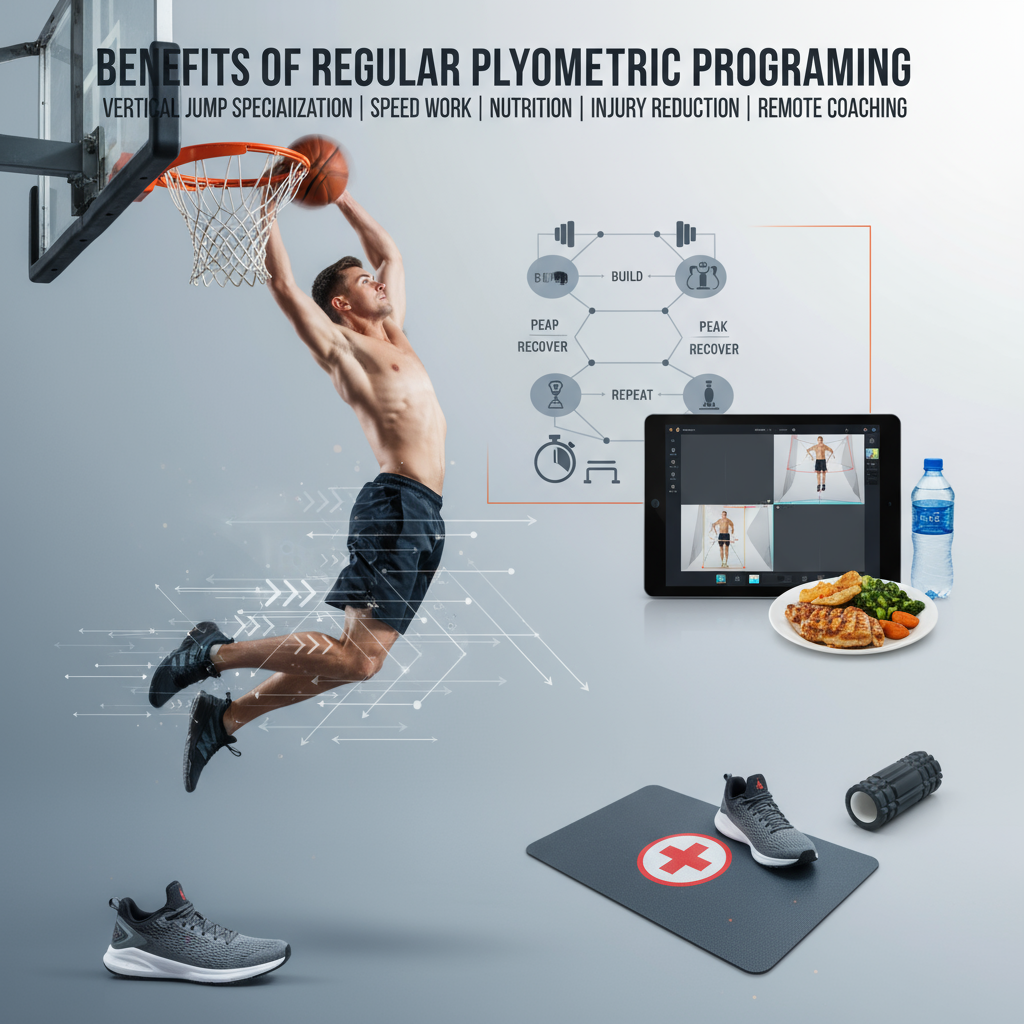Benefits of Regular Plyometric Programming for Your Health
For athletes, weekend hoopers, and busy professionals who want to feel springier, stronger, and more resilient, the struggle is real: inconsistent workouts, tight hips, sore knees, slow first steps, and a nagging worry you’ll get hurt if you jump too hard. You want clear steps, not guesswork. Jump High Now plugs the gaps with smart plyometric programming—tied into vertical jump specialization, strength & conditioning cycles, sport-specific speed work, and athlete nutrition planning—plus remote coaching with video analysis so your form, progress, and injury risk reduction protocols are handled without you spinning your wheels.
What is plyometric programming—and why does it boost health?
Plyometrics are fast, explosive movements (think hops, bounds, jumps) that train your stretch–shortening cycle. Done consistently, they improve power, bone density, balance, and metabolic health. And—this is key—structured programming spaces stress, progresses volume, and teaches landing mechanics so you get benefits without beat-up joints.
Step-by-step: How do you start a safe, effective plyometric routine?
- Get cleared and baseline. Quick movement screen, note any pain, and record simple tests (5 vertical jumps, 10-second pogo hops). I’ve seen this save people from flaring an old ankle in week 1.
- Warm up for 12 minutes. Light cardio, dynamic mobility, then activation (glute bridge, calf raises, snap-downs). You’re prepping tendons, not just “getting warm.”
- Learn landing first. Soft knees, hips back, ribs down, quiet feet. Stick landings for 2 seconds—own the position before you chase height.
- Start low-impact. 3x10 ankle pogos, 3x5 box step-offs to stick, 3x6 med-ball chest pass to sprint. Crisp reps. Long rests.
- Progress inside strength & conditioning cycles. Weeks 1–4: low-to-moderate contacts; weeks 5–8: add countermovement jumps, bounds, and sport-specific speed work. Vertical jump specialization slots in here—very targeted.
- Recover like a pro. Train plyos 2 days per week with 48 hours between. Sleep 7–9 hours, and dial athlete nutrition planning (30 g protein post-session, fluids, carbs that don’t cost an arm and a leg).
- Track, analyze, adjust. Use a simple log (contacts, RPE, notes). Remote coaching with video analysis catches knee valgus or lazy arms you won’t feel—Jump High Now tweaks volume and technique fast.
How often should you do plyometrics?
Twice per week is the sweet spot for most people, especially in-season or during busy fall schedules. Keep total quality contacts to a manageable number and retest after 8 weeks—vertical jump, 10-yard burst, and how your joints feel on stairs.

What health benefits can you expect?
- Stronger bones via high-velocity loading (great for long-term resilience).
- Better tendon stiffness—snappier steps without extra grind.
- Improved balance and coordination, which supports injury risk reduction protocols.
- Elevated power for daily life and sport (hello, faster first step).
- Metabolic boost—short, intense bouts that complement cardio.
- Confidence—landing well just feels good. Honestly, it’s fun.
Is plyometric training safe for beginners or older adults?
Yes—if volume is controlled and landings are coached. Start seated-to-stand jumps, low pogos, and short skips; avoid depth drops early. In my experience, clear cues and small progressions beat “more jumps” every single time.
Need help dialing this in?
If this feels overwhelming, Jump High Now can handle your plan end-to-end—vertical jump specialization, strength & conditioning cycles, sport-specific speed work, athlete nutrition planning, and remote coaching with video analysis—so you hit the ground running without guessing… and without getting hurt.






